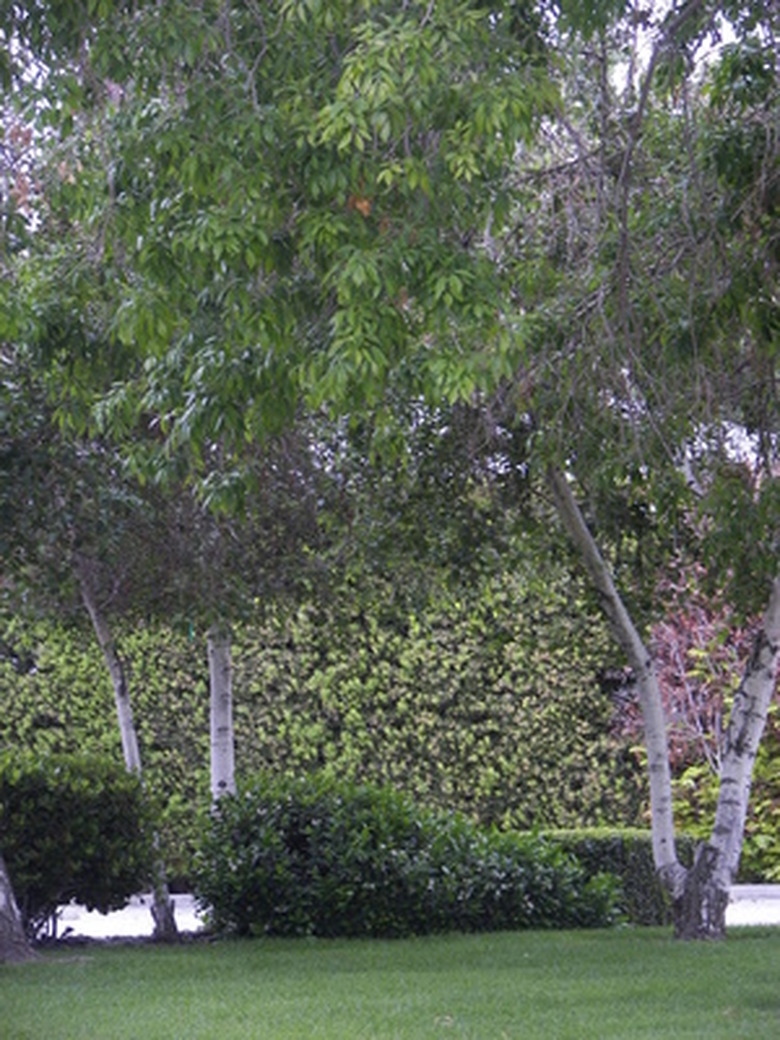Birch Tree Types
Birch trees are a popular choice among homeowners for their distinctive bark and their delicate foliage. The birch is a difficult tree to grow and though they have a life expectancy of 40 to 50 years, many trees die before reaching their 20th year. Selecting the appropriate birch tree for your climate and soil conditions and planting it in the proper location will give your tree the chance to thrive and flourish for many years.
European White Birch (Betula pendula)
Best grown in the colder, northern climates, the European white birch will reach heights of 40 to 60 feet. The European white birch prefers full sun to partial, shaded light exposure and does best in soil that is moist and well-drained. Foliage is delicate and light green in the spring and summer; leaves turn yellow in the fall. The bark of the tree is white and peels slightly and turns black as it ages. European white birches do not tolerate warm climates; hot weather leaves them stressed and susceptible to the bronze birch borer.
- Birch trees are a popular choice among homeowners for their distinctive bark and their delicate foliage.
- Best grown in the colder, northern climates, the European white birch will reach heights of 40 to 60 feet.
Paper Birch ( Betula papyrifera)
Paper birch trees are large, oval in shape and may be single or multi-trunked. They reach heights between 50 and 70 feet. Younger trees have brown bark, as trees age the bark turns white and peels to reveal an inner bark that is orange in color. Leaves are medium green in color and fade to yellow in the fall. Paper birch trees prefer full sun and moist, slightly acidic, well-drained soil and grow best in cold climates. Hot summer conditions stress trees and leave them open to invasion by the bronze birch borer.
River Birch (Betula nigra)
Reaching heights between 40 and 70 feet, the river birch is one of the hardier birch trees. They grow best in full to partial shade and thrive in well-drained, slightly acidic soils. The river birch is not a drought tolerant tree, preferring sites that are wet. Oval to round in shape, most river birch trees are multi-trunked. Bark peels and can be cream, cinnamon brown or reddish brown in color. Leaves are a medium green shade and turn bright yellow in autumn months. The river birch does well in warmer areas of the country but also thrives in cooler climates. They are susceptible to leafminers but the attacks aren't usually severe. River birch trees are resistant to the bronze birch borer.
- Paper birch trees are large, oval in shape and may be single or multi-trunked.
- Reaching heights between 40 and 70 feet, the river birch is one of the hardier birch trees.
Gray Birch (Betula populifolia)
The smaller, more delicate looking gray birch trees reach heights of 20 to 40 feet. Their white bark does not peel like other birches. They are oval or irregular in shape and are often multi-trunked. Leaves are a dark shade of green and turn bright yellow in the fall. The gray birch tolerates poor soils but will thrive best in moist, well-drained soil conditions. Plant gray birches in full sun to partially shaded areas. These birch trees are not able to endure hot summers. They prefer the colder climate zones of the country. Gray birches are only moderately susceptible to the bronze birch borer but may suffer attacks by leafminers, although the damage they do is usually minimal.
- The smaller, more delicate looking gray birch trees reach heights of 20 to 40 feet.
- The gray birch tolerates poor soils but will thrive best in moist, well-drained soil conditions.
